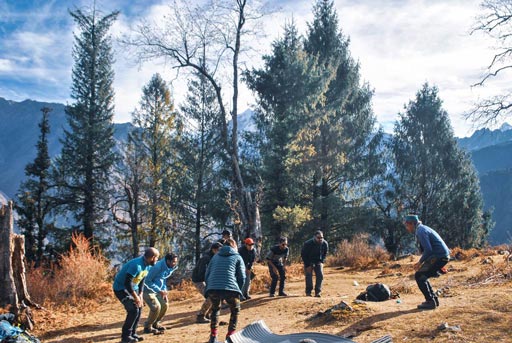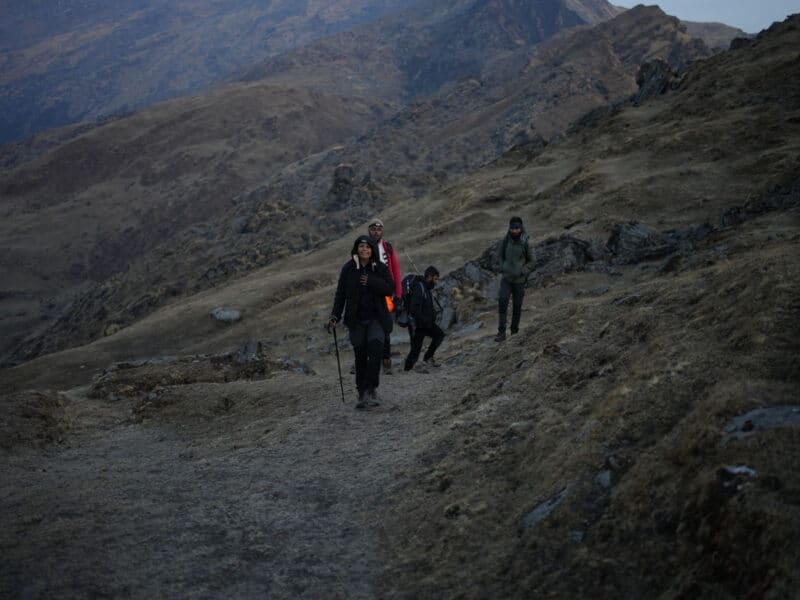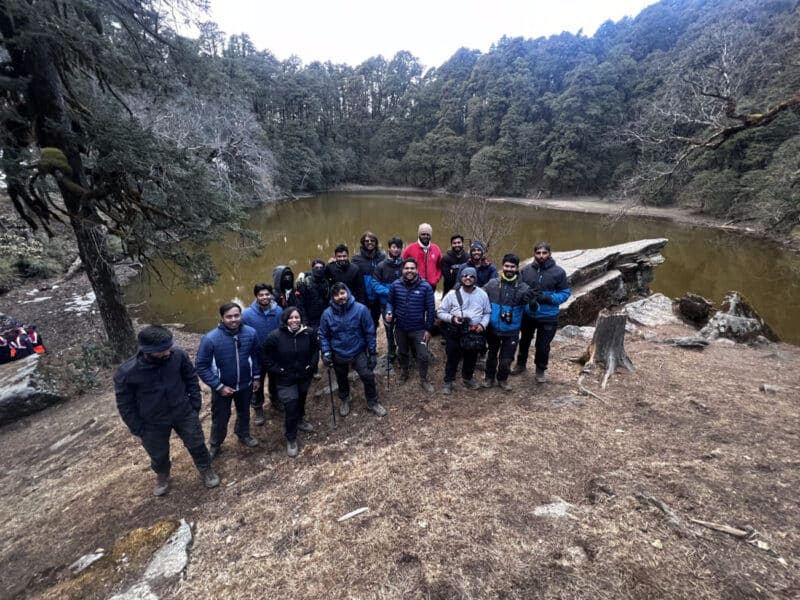Fitness preparation for trekking in the Himalayas
Trekking in the Himalayas is one of the most cherished experiences for adventure enthusiasts. The Himalayan landscapes, snow-capped peaks, and scenic beauty are sure to leave you amazed. However, it is essential to prepare yourself before venturing out. Our team at Nomad Adventures are very particular about the preparation before coming on the trek. It can be a daunting task if you do not focus on your stamina. Depending on the difficulty level of the trek, each trek requires a certain amount of fitness.
Fitness preparation for the Himalayan trek can be strenuous but the results which you will see after climbing up the mountain are highly rewarding. In this article, we will discuss some tips on how to get fit for the Himalayan trek.
The best time to start preparing for any High altitude Himalayan trek is at least 3 to 6 months before. It is never too late or early to start a journey in the mountains. In case, you do have not much time left then follow a different routine, though make sure you follow a fitness regimen.
Start with a walk
Yes, that is correct, to level up your stamina, start walking up to 10 km every day. The first step for your fitness for the Himalayan trek shall be a walk. Start with 2kms walk then gradually increase your pace, first day 2kms, then 3 – 4 km and then on the third day, 5- 6 km until you end up walking at least 10 km every day.
Cardiovascular Endurance
Cardiovascular endurance is the ability of the heart and lungs to supply oxygen to the muscles during prolonged physical activity. Trekking in the Himalayas requires a high level of cardiovascular endurance, and it is crucial to improve your stamina before embarking on the journey. To improve your cardiovascular endurance, you can engage in activities such as running, cycling, swimming, or brisk walking. Begin with a slow pace and gradually increase your intensity and duration. Aim for at least 30 minutes of cardiovascular exercise three to four times a week.
Strength Training
Strength training is essential to build overall body strength and improve your trekking experience. The Himalayan terrain is uneven, and it requires you to carry your backpacks, which can be physically demanding. To build your strength, you can engage in weight training or bodyweight exercises such as lunges, squats, push-ups, and pull-ups. Aim for at least two to three strength training sessions per week.
Improve Flexibility
Flexibility is essential to prevent injuries and improve your trekking experience. Trekking in the Himalayas requires you to walk on uneven terrain, and it is crucial to have flexible muscles and joints to prevent injuries. You can improve your flexibility by practising yoga or stretching exercises. Aim for at least two to three yoga or stretching sessions per week.
Practice With Backpack
Start practising with your backpack, and only carry what is absolutely necessary. Things to carry & how to pack your backpack on the Himalayan trek are essential to having a positive experience. Avoid carrying a heavy backpack if you want to enjoy your walk through the mountains rather than being fatigued. The best way to carry your backpack is on your shoulders in order to build up your strength and endurance to carry the weight. Unless you are an experienced trekker, the recommended weight for your backpack shouldn’t be more than 9 to 10 kg.
Building Stamina
Building stamina is essential to endure long hours of trekking in the Himalayas. You can build your stamina by engaging in high-intensity interval training (HIIT) or endurance training. HIIT involves short bursts of intense activity followed by short periods of rest. Endurance training involves prolonged physical activity at a moderate pace. Aim for at least two to three stamina-building sessions per week. Even aerobics or zumba is good for building up your stamina for at least 30 mins to 45 mins for three to four times a week.
Follow A Healthy Diet
You should completely cut down on alcohol or smoking to help you gain strength internally whereas external fitness can be achieved if you do exercise. Eat green vegetables, and fruits, and add fibre, vitamins and minerals to your intake.
Improve Your Sleeping Pattern
To get complete rest and prevent fatigue in your body, it is essential to get the right amount of sleep. At high altitudes, trekkers usually have difficulty sleeping hence it is important to inculcate a pattern in your sleep cycle. Without adequate sleep, it becomes difficult to climb at a gradual pace and as result, your body will be worn out. Try meditation for mental balance. Go for a brisk walk in the evening, listen to light music or start reading before going to sleep. Within a few days, you will see a change in your overall sleep pattern.
Try Walking on Hilly Terrain
Walking on hilly terrain is an excellent way to prepare for the Himalayan trek. It will help you get used to the uneven terrain and build your leg muscles. You can start by walking on inclined surfaces, and gradually increase the intensity and duration. Aim for at least one to two hilly terrain walks per week.
Wearing The Right Shoe – This is one of the most crucial parts of the trek. To avoid blisters and shoe bites wearing the right shoe is very important. As you will walk on uneven terrains which can be full of snow and uneven paths, the right shoes will help you give adequate support. Read more – How to choose the trekking shoe for your Himalayan trek.
Altitude mountain sickness – If you plan to travel to an elevation higher than 8,000 feet above sea level or higher, you may be at risk for AMS, which is caused by low oxygen levels in the air. Eat healthy, and avoid smoking and alcohol. It is better to be aware of the symptoms and how to prevent altitude mountain sickness as even a fitter person can develop these symptoms.
Conclusion
Fitness preparation for the Himalayan trek requires dedication, patience, and hard work. By following these tips, you can improve your fitness level and enjoy your trekking experience to the fullest. Remember to consult with your doctor before starting any new exercise routine, especially if you have any pre-existing medical conditions. With the right mindset and preparation, you can conquer the Himalayan terrain and create lifetime memories.







0 Comment